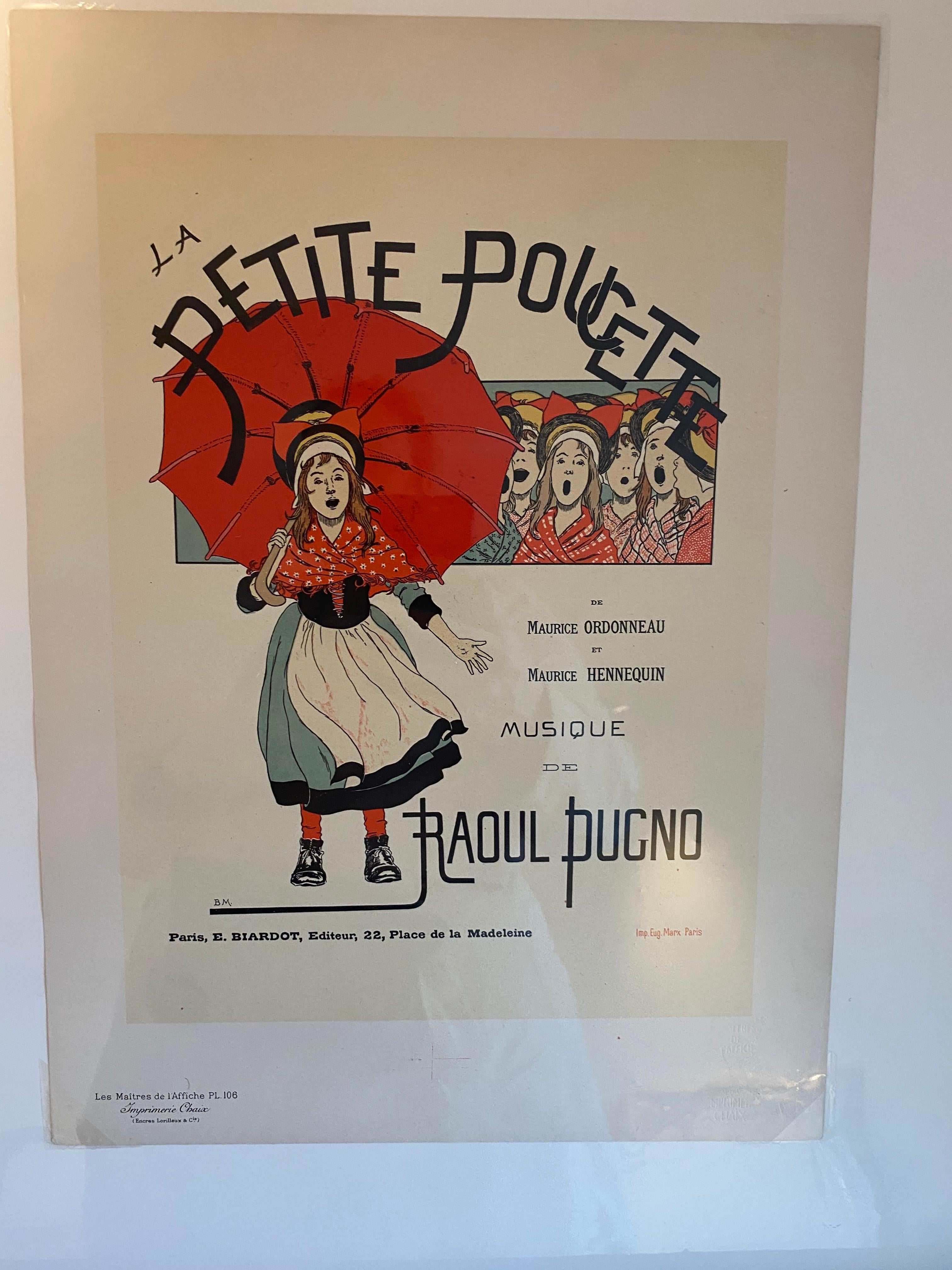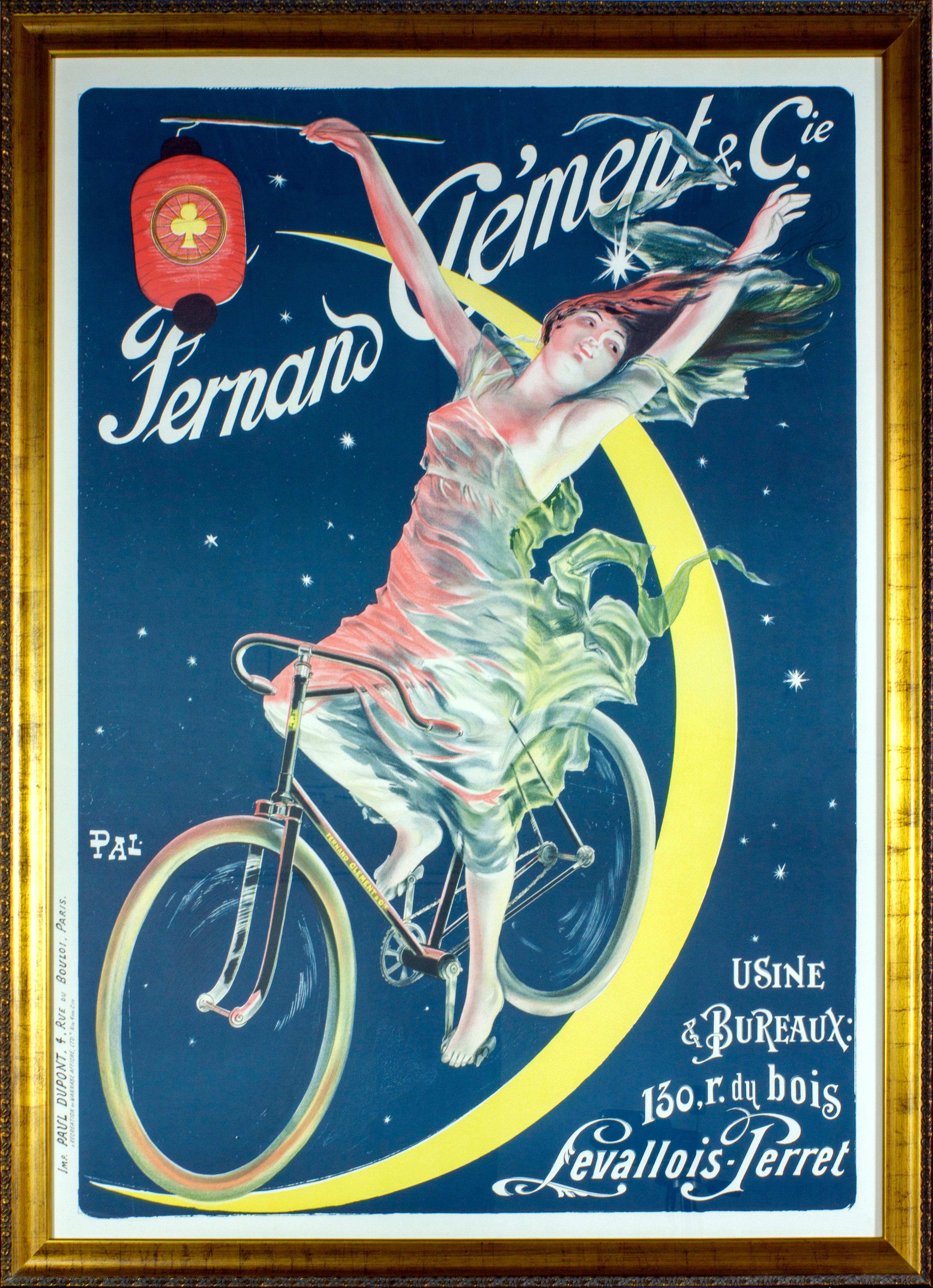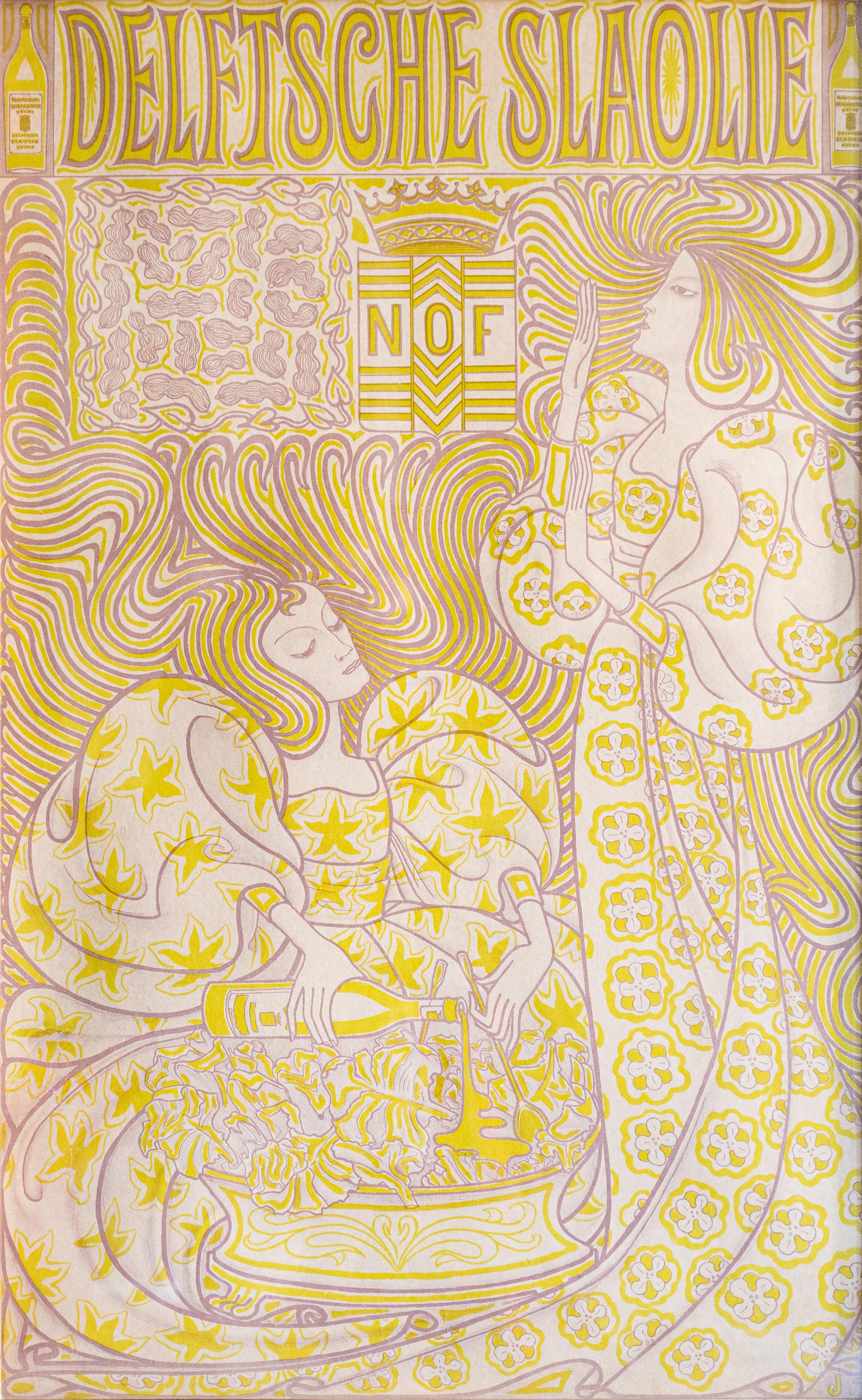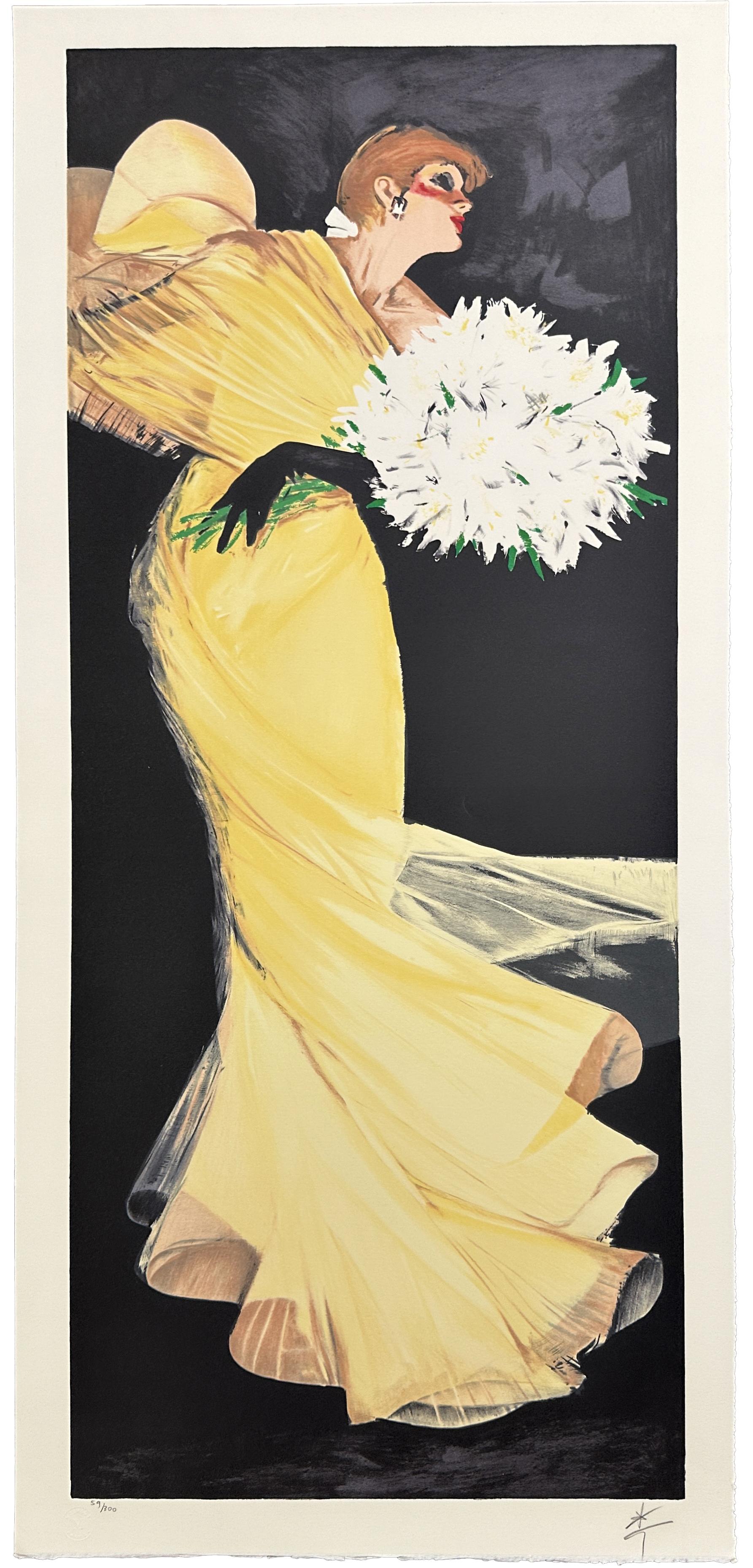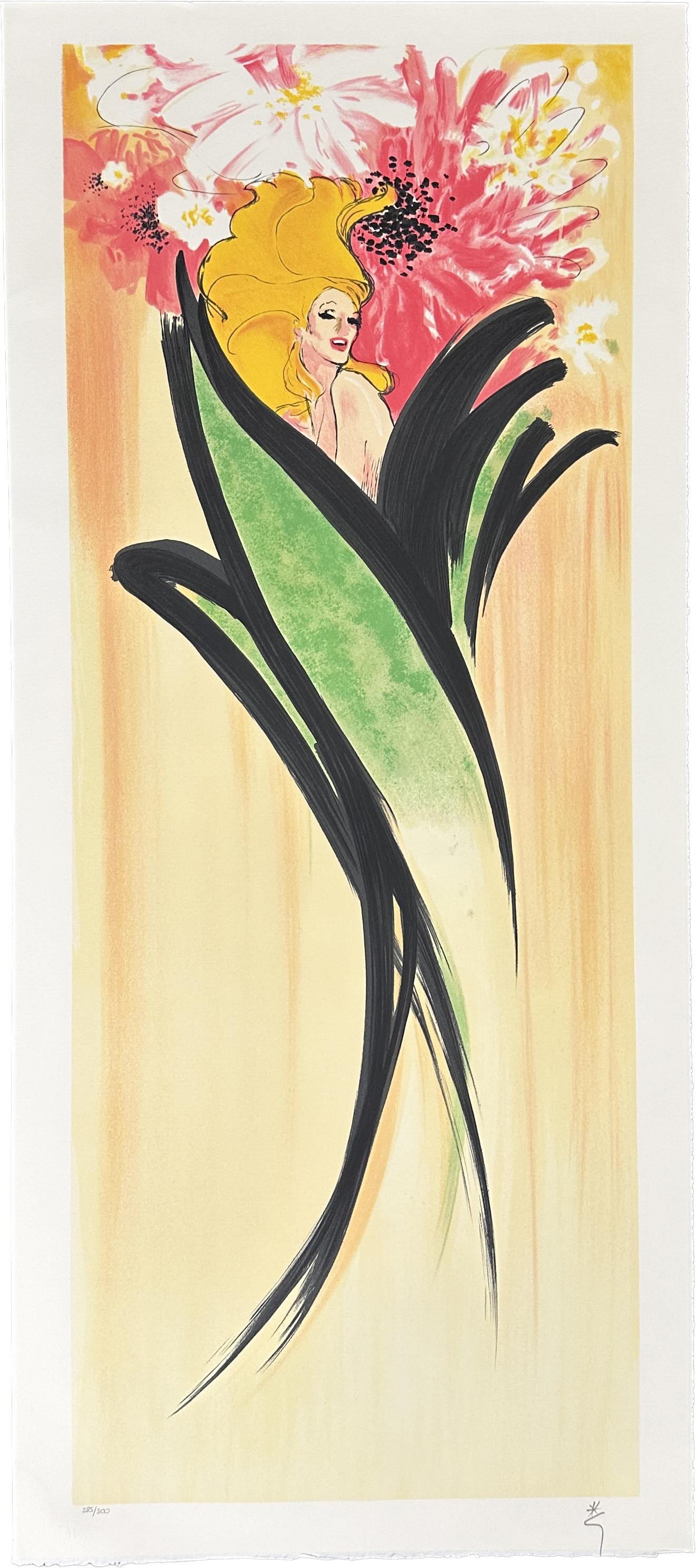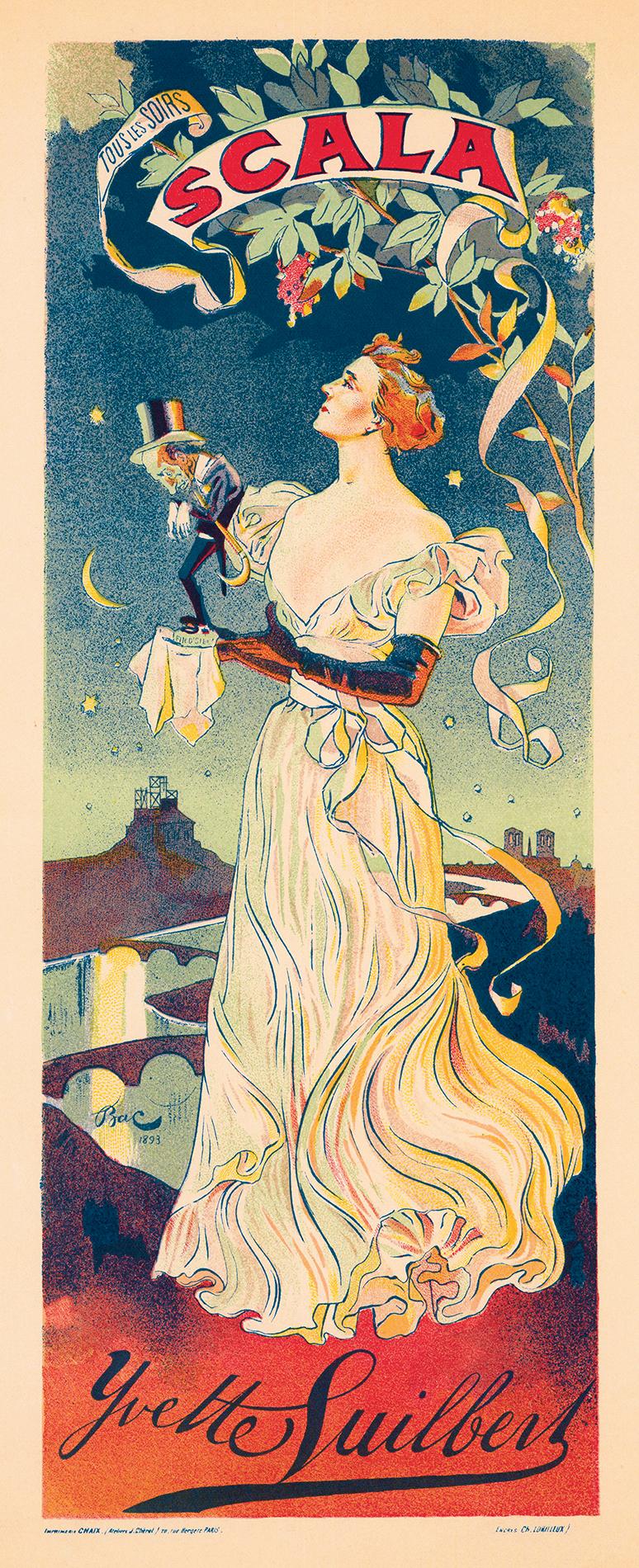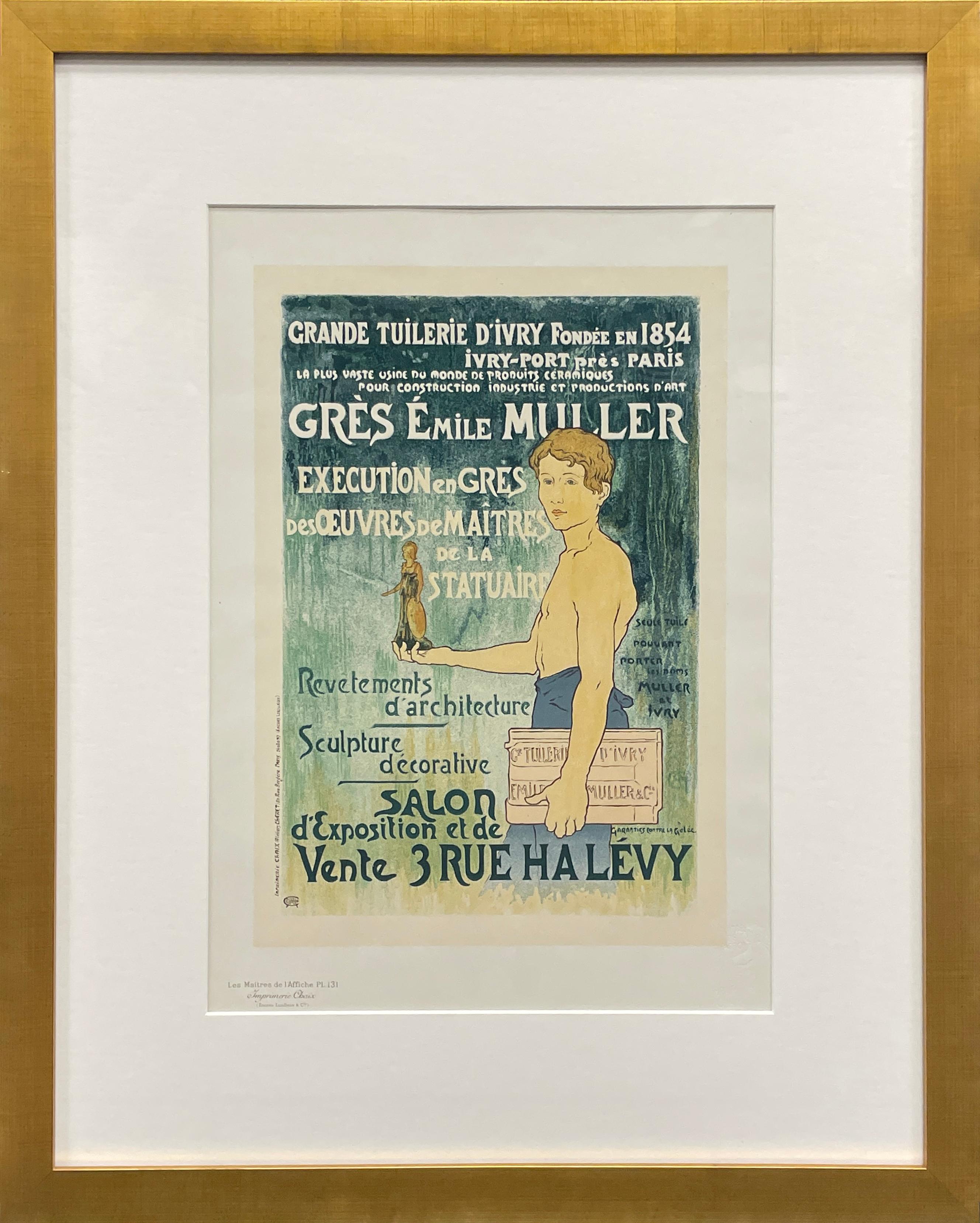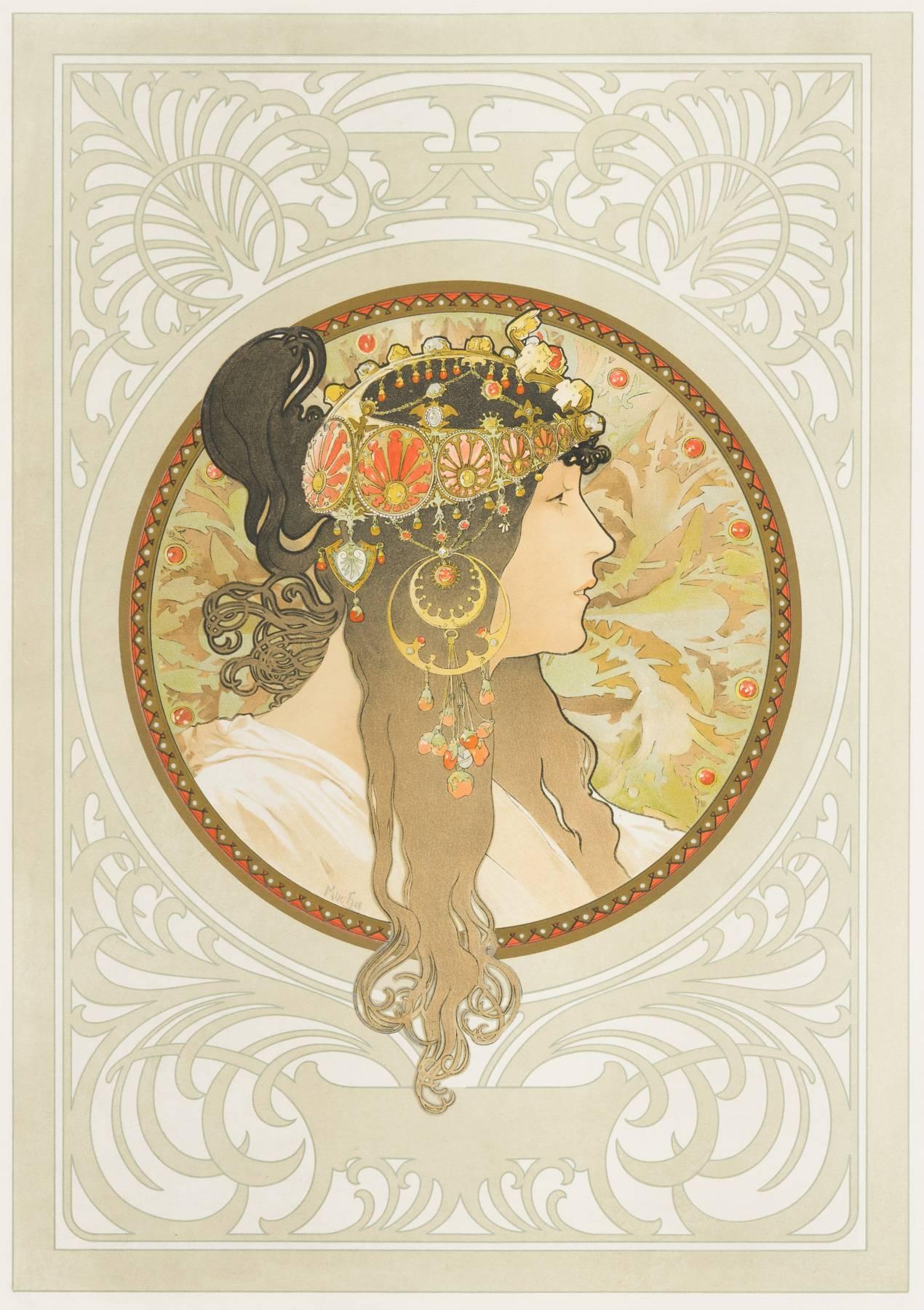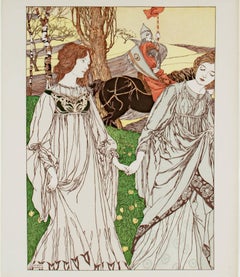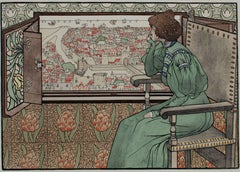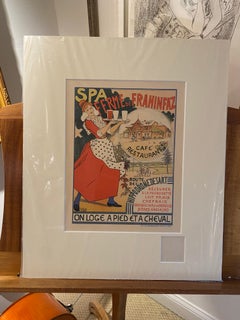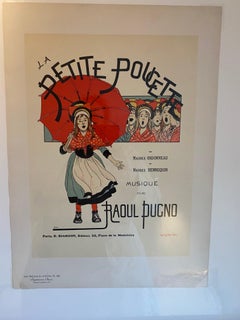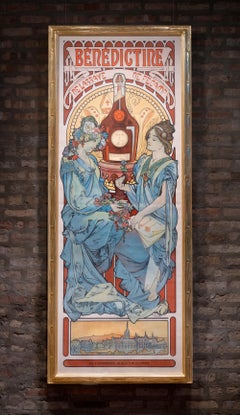
From: Ilsee Princess of Tripoli Recto: "Dream Woman" Verso: "Visions" Lithograph
View Similar Items
Want more images or videos?
Request additional images or videos from the seller
1 of 8
Alphonse MuchaFrom: Ilsee Princess of Tripoli Recto: "Dream Woman" Verso: "Visions" Lithograph1897
1897
About the Item
- Creator:Alphonse Mucha (1860 - 1930, Czech)
- Creation Year:1897
- Dimensions:Height: 20.38 in (51.77 cm)Width: 18.5 in (46.99 cm)
- Medium:
- Movement & Style:
- Period:
- Condition:
- Gallery Location:Milwaukee, WI
- Reference Number:Seller: 13684g1stDibs: LU60534960742
About the Seller
4.9
Platinum Seller
These expertly vetted sellers are 1stDibs' most experienced sellers and are rated highest by our customers.
Established in 1966
1stDibs seller since 2017
Typical response time: 1 hour
More From This SellerView All
- "Le Passant, " Original Color LithographBy Robert EngelsLocated in Milwaukee, WI"Le Passant" is an original Art Nouveau color lithograph. It depicts two women in the foreground wearing medieval white robes and a knight passing behind them on a black horse. Features the L'Estampe Moderne blindstamp bottom right hand corner. 1898. 15 3/4" x 12" art 23" x 19 1/4" framed Robert Engels studied in Dusseldorf and moved shortly thereafter to work in Munich. Later, he became a professor at a school of applied arts at the KGS in Munich. He created many decorative prints as well as stained glass windows and also created compositions to illustrate Joseph Bedier's rendition of "Tristan and Iseult...Category
1890s Art Nouveau Figurative Prints
MaterialsLithograph
- "Diane Chasseresse, " Original Color Lithograph signed by Gaston De LatenayBy Gaston de LatenayLocated in Milwaukee, WI"Diane Chasseresse" is an original color lithograph signed by the artist Gaston de Latenay. It is edition 36/100, which is written in the lower right...Category
1890s Art Nouveau Figurative Prints
MaterialsLithograph
- "Solveig L'Estampe Moderne I, " Original Color Lithograph by Gustave-Max StevensBy Gustave-Max StevensLocated in Milwaukee, WI"Solveig L'Estampe Moderne I" is an original color lithograph by Gustav Max Stevens, signed lower right in the stone. It depicts a woman (Solveig) in a green dress looking out a wind...Category
1890s Art Nouveau Figurative Prints
MaterialsLithograph
- "Fashionable Boulevard Montmartre, " Original Lithograph Poster by Pierre BrenotBy Pierre Laurent BrenotLocated in Milwaukee, WI"Fashionable Boulevard Montmartre" is an original lithograph poster by Pierre Laurent Brenot. This piece depicts four figures in fashionable costumes in a variety of dynamic poses. T...Category
1940s Art Nouveau Figurative Prints
MaterialsLithograph
- "La Phalène des Isles de la Mer, " Original Color Lithograph by Franz MelchersBy Franz MelchersLocated in Milwaukee, WI"La Phalène des Isles de la Mer" or "The Moth of the Islands of the Sea" is an original color lithograph by Franz Melchers. This piece was published in L'Estampe Moderne I, an Art No...Category
1890s Art Nouveau Figurative Prints
MaterialsLithograph
- "Lutece (L'Estampe Moderne II), " Original Color Lithograph by Adolphe GiraldonBy Adolphe GiraldonLocated in Milwaukee, WI"Lutece" is an original color lithograph by Adolphe Giraldon. This piece depicts a woman holding a sailing ship among lush vegetation. In the background, Notre Dame rises. Lutece is ...Category
1890s Art Nouveau Figurative Prints
MaterialsLithograph
You May Also Like
- "Hippodrome des Art", Maitre de l'affiche lithographBy François DuyckLocated in Hinsdale, ILDUYCK, EDOUARD (1872 -1897) CRESPIN, ADOLPH (1859 –1944) "Hippodrome des Art" Original lithograph from "Les Maitres de L'Affiche" series Printed by Imprimerie Chaix, Paris Bearing MDL stamp lower right, from issue #6, 1894. Plate #28 Unframed Size:11 3/8 x 15 3/4” The "Les Maitres de l'Affiche" series was offered as a subscription series to collectors every month for 60 months, from December 1895 through November 1900. The "Maitres de l'Affiche," were issued as separate numbered sheets, referred to as "plates". They were numbered, with the printers name "Imprimerie Chaix," in the margin at the bottom left hand corner, "PL.1" to "PL.240." In the margin at the bottom right hand corner of each, is a blind embossed stamp from a design of Cheret's. The smaller format and the fact the "Maitres" were a paid subscription series, allowed Imprimerie Chaix to use the latest state of the art printing techniques, not normally used in the large format posters due to cost. A very high quality of paper was used, where as the large format posters were printed on lesser quality newsprint, due to cost and a short expected life span. This explains why the quality of the printing, in the "Maitres de l'Affiche," usually far exceeds that of their larger counterparts. "...Posters were created by the team of Duyck & Crespin, whose close collaborative efforts garnered them the nickname 'the Siamese twins.' Between their first joint attempt at poster-making in 1885-1886 and Duyck's death in 1897, the duo produced a large corpus of works... as well as set designs and costumes for the theatre " (Brussels p.76) This is a Belgian poster for the Ferme de Frahinfaz, on the Hippodrome des Art road near Spa. "Accommodations for riders and pedestrians. Fork and knife lunches, fresh milk, real "Faro" beer from Brussels and English beers"Category
1890s Art Nouveau Figurative Prints
MaterialsLithograph
- "La Petite Poucette" from Les Maitres de l'AfficheBy Bernard Boutet de MonvelLocated in Hinsdale, ILDE MONVEL, BOUTET (1859 - 1927) "La Petite Poucette" Original lithograph from “Les Maitres de L’Affiche” series Printed by Imprimerie Chaix, Paris Bearing MDL stamp lower right, from issue #27, 1898. Plate #106 Unframed Size: 11 3/8 x 15 3/4” The “Les Maitres de l’Affiche” series was offered as a subscription series to collectors every month for 60 months, from December 1895 through November 1900. The “Maitres de l’Affiche,” were issued as separate numbered sheets, referred to as “plates”. They were numbered, with the printers name “Imprimerie Chaix,” in the margin at the bottom left hand corner, “PL.1” to “PL.240.” In the margin at the bottom right hand corner of each, is a blind embossed stamp from a design of Cheret’s. The smaller format and the fact the “Maitres” were a paid subscription series, allowed Imprimerie Chaix to use the latest state of the art printing techniques, not normally used in the large format posters due to cost. A very high quality of paper was used, where as the large format posters were printed on lesser quality newsprint, due to cost and a short expected life span. This explains why the quality of the printing, in the “Maitres de l’Affiche,” usually far exceeds that of their larger counterparts. Boutet de Monvel...Category
1890s Art Nouveau Figurative Prints
MaterialsLithograph
- "Bénédictine" Original 1898 Lithograph, Alphonse MuchaBy Alphonse MuchaLocated in Chicago, ILPublished by F. Champenois, Paris. "Bénédictine shows two girls pressing flowers amid book leaves, to remind us of the herbs that go into making the liqueur; the bottom part of the poster has a panorama of the Fecamp Abbey where the drink originated. Around 1510, one of the monks, Dom Bernardo Vincelli, prepared a liqueur using local wine and native herbs found in nearby woods, together with a few imported ingredients including muscat, ginger, clove and cardamom" (Wine Spectator, 70). As with all poster this size, the lithograph was made, in color, on two panels and joined at the center. Alphonse Mucha was a painter and decorative artist best known for the sensual Art...Category
1890s Art Nouveau Figurative Prints
MaterialsLithograph
- "Fernand Clement & Cie" lithograph print poster by Pal (Jean de Paléologue)By Pal (Jean de Paléologue)Located in Boca Raton, FL"Fernand Clément & Cie" framed lithograph poster by Pal (Jean de Paléologue.) Inscription on side reads Imp. Paul Dupont, 4 Rue du Bouloi, Paris. Recreation 84 Wannabe Affiche, Ltd. ...Category
1890s Art Nouveau Figurative Prints
MaterialsLithograph
- Delftsche SlaolieBy Jan TooropLocated in Chicago, ILJan Toorop was born in Java, studied in Holland and then spent three key years in Brussels, where he was a member of the circle of artists, "Les XX," during which time he befriended ...Category
1890s Art Nouveau Figurative Prints
MaterialsLithograph
- Fromme's Kalender Art Nouveau Lithograph Poster Koloman Moser Vienna SecessionBy Koloman MoserLocated in Chicago, ILLithograph printed by Albert Berger, Vienna. This design "was considered very advanced in 1899, with its large scale portrayal of the motif and the almost complete renunciation of interior drawing. The silhouette of the body is in mysterious contrast to the realistically portrayed head and hands. The unwavering gaze of the woman underlines the symbolism of the design: the Norn [ancient Norse goddess of fate] with the hour-glass and snake-ring embodies the eternal circle of life and the running out of time" (Vienna Secession, Denscher, p. 45). As the poster was originally used in 1899, the waning sand in the hourglass quite naturally can be assumed to be the coming of the end of the century. KOLOMAN MOSER: Instead of applying his flair and art education to paintings, Koloman Moser embodied the idea of Gesamt Kunstwerk (all-embracing art work) by designing architecture, furniture, jewelry, graphics, and tapestries meant to coordinate every detail of an environment. His work transcended the imitative decorative arts of earlier eras and helped to define Modernism for generations to come. Moser achieved a remarkable balance between intellectual structure (often geometric) and hedonistic luxury. Collaborating with Gustav Klimt and Josef Hoffmann, the artist was an editor and active contributor to Ver Sacrum, (Sacred Spring), the journal of the Viennese Secession that was so prized for its aesthetics and high quality production that it was considered a work of art. The magazine featured drawings and designs in the Jugendstil (Youth Style) along with literary contributions from distinguished writers from across Europe. It quickly disseminated both the spirit and the style of the Secession. In 1903 Moser and Hoffmann founded and led the Wiener Werkstatte (Viennese Workshop) a collective of artisans that produced elegant decorative arts items, not as industrial prototypes but for the purpose of sale to the public. The plan, as idealistic then as now, was to elevate the lives of consumers by means of beautiful and useful interior surroundings. Moser’s influence has endured throughout the century. His design sensibility is evident from the mid-century modern furniture of the 1950s and ‘60s to the psychedelic rock posters...Category
1890s Art Nouveau Figurative Prints
MaterialsPaper, Lithograph
Recently Viewed
View AllMore Ways To Browse
Art Nouveau Woman
Antique Dreams
Architectural Print Set Framed
Set Of Framed Architectural Prints
Neoclassical Woman
Princess Flower
Mucha Alphonse
Art Nouveau Woman Jewelry
Robe Set
Art Nouveau Advertising
Illustration Art Nouveau
Antique Flower Posters
Mucha Originals
Mucha Original Art
19th Century Lithographs Woman
Sarah Bernhardt
Mucha Lithograph
Womens Robes

